Focus-Stacking Macro Subjects
Feb 21, 2012 21:31:28 #
tinusbum wrote:
quote=naturepics43 quote=tinusbum heres my favor... (show quote)
Thanks for the info. I'll give it a try
Feb 22, 2012 16:54:42 #
docrob
Loc: Durango, Colorado
Stumptowner wrote:
Shot this by window light using 1/5-sec at f/8. ISO 200. WB set to cloudy. Original magnification was roughly 1:3 and then I cropped using iphoto on my MacBook. No other PP. I stacked 6 images using Helicon Focus.
Camera was a Nikon D300 with the Nikkor 105G macro lens.
Camera was a Nikon D300 with the Nikkor 105G macro lens.
a suggestion and an observation - the latter first. You tend to approach flowers from above looking down. Doing image stacking of a flower like the gerbia daisy seems a bit pointless since everything one might truely need in focus is pretty much all on the same focal plane.
Suggestion: come at the flowers from flower level - from the side - doing so will not only shift your way of seeing but will be a much better test for image stacking than what you are currently playing with.
Feb 22, 2012 22:01:09 #
docrob wrote:
quote=Stumptowner Shot this by window light using... (show quote)
Actually, I rarely photograph flowers from above. I believe the only ones I've done that with are Trilliums-- which I cannot find-- and weren't stacked.
Since I'm shooting at f8 with a macro lens the DOF is actually not that deep. I suppose I could post all images from the stack to demonstrate that individually they are not in focus, but I don't see the point.
Feb 22, 2012 22:22:38 #
docrob wrote:
quote=Stumptowner Shot this by window light using... (show quote)
Great advice Docrob, I think the Gladiola is a good subject for stacking.
One day soon I will give it a try.
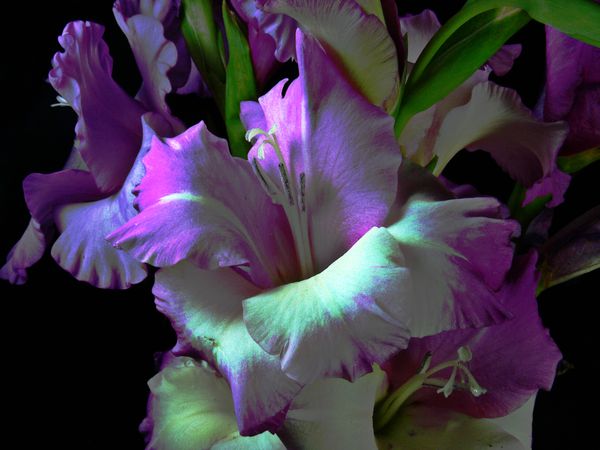
Feb 22, 2012 22:53:39 #
docrob
Loc: Durango, Colorado
tinosa wrote:
quote=docrob quote=Stumptowner Shot this by wind... (show quote)
yep the gladiola will be a challenge - try to find better light than the demo too
Feb 22, 2012 22:55:10 #
docrob
Loc: Durango, Colorado
Stumptowner wrote:
quote=docrob quote=Stumptowner Shot this by wind... (show quote)
this may be true - shooting down - but the one's I've seen of yours with the image stacking have been taken from that point of view.....the gladiola will not go down so easily - how about an Iris?
Feb 26, 2012 11:48:36 #
How would you compare the stacking process in CS5 with the Hadley combinezp? CS5 is very easy to use, but does combinezp do a better job?
Feb 27, 2012 15:42:24 #
This image of a daffodil was made from 50 images processed with Zerene Stacker PMax. The image stack was shot with a Pentax K5 camera and a Sigma 105mm f/2.8 lens (the older one) mounted on a Cognisys Stacker Shot. The images were taken at f/8.0 and 1/15 sec in manual focus. The daffodil was placed in a light-tent with backlighting with a LED white light.
The raw images were converted to 16-bit TIF files with a bit of sharpening. The final composite TIF was not processed in Lightroom 3 before posting.
The stack was processed by Zerene Stacker (both PMax and DMap) and by Helicon Focus (both methods A and B) with default settings. I prefer the image from Zerene Stacker PMax. The other three images had sigficant stacking artifacts.
The final image is what I had imagined while viewing the flower through the viewfinder.
The raw images were converted to 16-bit TIF files with a bit of sharpening. The final composite TIF was not processed in Lightroom 3 before posting.
The stack was processed by Zerene Stacker (both PMax and DMap) and by Helicon Focus (both methods A and B) with default settings. I prefer the image from Zerene Stacker PMax. The other three images had sigficant stacking artifacts.
The final image is what I had imagined while viewing the flower through the viewfinder.
Final image from 46-image processed stack
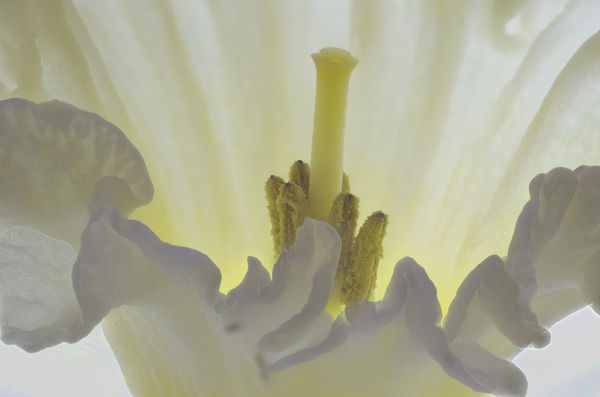
Image #1 of 46
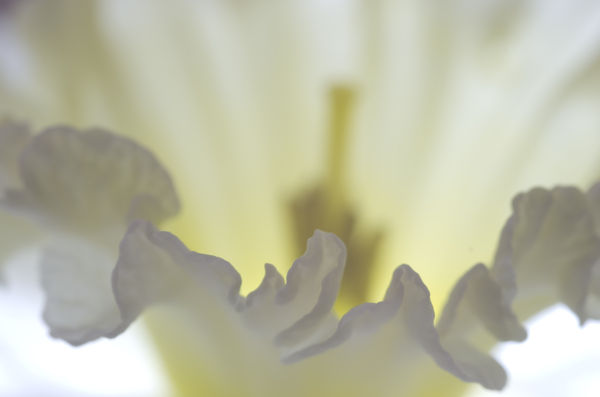
Image #46 of 46
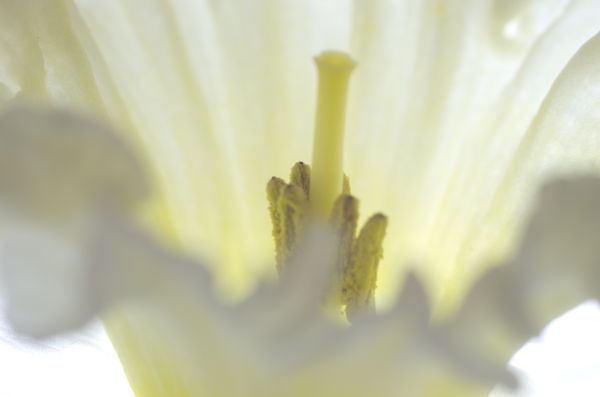
Feb 27, 2012 16:22:07 #
docrob
Loc: Durango, Colorado
NatureFan wrote:
This image of a daffodil was made from 50 images p... (show quote)
Let me get this straight - it required 50 separate images to create #1???
Feb 27, 2012 17:05:43 #
The number #1 image is the first one of the 50 images to create the composite image. Number #46 is the 46th image in the stack.
Feb 27, 2012 19:18:16 #
Nature Fan:
Thanks for the informative post.
Great work !
I was blown away when I googled "Cognisys Stacker". I never would have imagined a completely automated, programable stacking machine.
Quite expensive but well worth it I can see, for the dedicated stacking macro maven like yourself.
I hope you keep posting your stacks.
Thanks for the informative post.
Great work !
I was blown away when I googled "Cognisys Stacker". I never would have imagined a completely automated, programable stacking machine.
Quite expensive but well worth it I can see, for the dedicated stacking macro maven like yourself.
I hope you keep posting your stacks.
Feb 27, 2012 19:47:07 #
docrob
Loc: Durango, Colorado
NatureFan wrote:
The number #1 image is the first one of the 50 images to create the composite image. Number #46 is the 46th image in the stack.
Ok my mistake the FIRST image you posted in the final result of taking about 50 separate images and melding them together in this program??
Feb 27, 2012 22:24:52 #
Macro Forum Manager wrote:
This thread is strictly for macro images compiled with focus-stacking programs. Please provide a little text about process, number of original images, and name of program used. One "standard" narrow DOF image would be appreciated for comparison purposes.
HELP! I can't seem to get the same quality image as others on this thread. I used Nikon D90, Micro Nikkor 105D (set to 1:1) on copy stand with focusing rail. ISO 400, f-11, 1/125 I took 5 images at 1mm increments. I used combineZP to stack images then cropped. I did no PP. C&C please. I need help.
2nd image in series of 5-full size
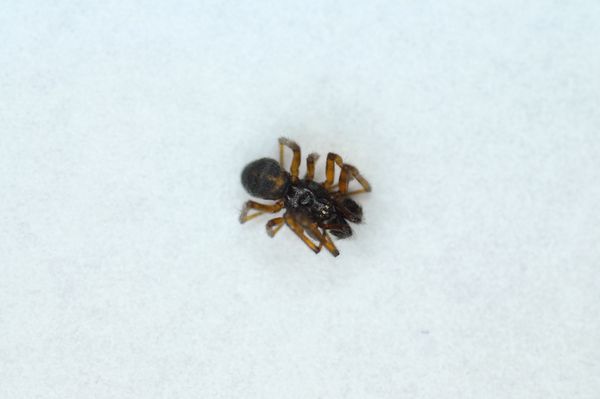
Finished stack-cropped
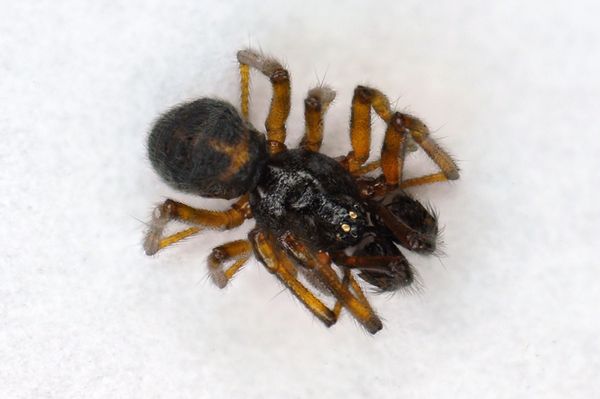
Feb 27, 2012 23:45:24 #
naturepics43 wrote:
I enlarged your composite image. It appears to me, that the top of your spider is not in focus.HELP! I can't seem to get the same quality image as others on this thread. I used Nikon D90, Micro Nikkor 105D (set to 1:1) on copy stand with focusing rail. ISO 400, f-11, 1/125 I took 5 images at 1mm increments. I used combineZP to stack images then cropped. I did no PP. C&C please. I need help.
One way to assure focus, is to start your millimeter increments ABOVE spider, then work your increments through spider. I suspect that if you had seven (7) separate 1-mm increments, you would have total sharpness.
Below is a chart showing focal resolution for different f-stops of a Nikkor 105D lens. You might consider f/8 or f/5.6 for optimal focus.
Also, use at least a 1-second delay for exposure, so you can eliminate mirror-caused sensor vibration in camera.
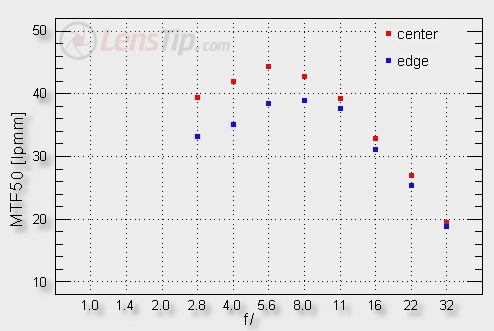
Feb 28, 2012 00:09:33 #
Nikonian72 wrote:
quote=naturepics43 HELP! I can't seem to get the ... (show quote)
Thanks again for being available to help. The MTF chart is a real eye opener. I'll do another series @ f5.6 & use the delay. If I use Liveview, does the mirror stay up or is it better to use the delay? Thanks so much for your for your time & help.
If you want to reply, then register here. Registration is free and your account is created instantly, so you can post right away.





